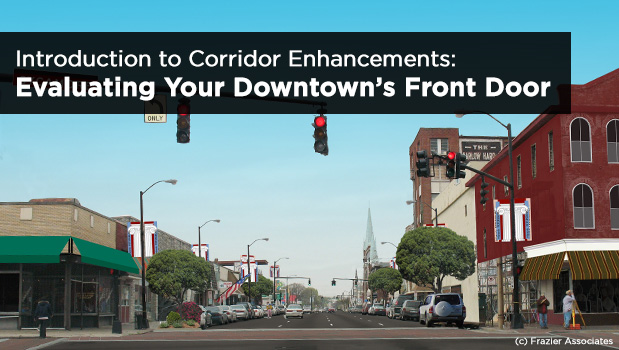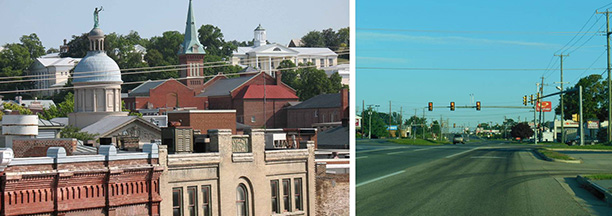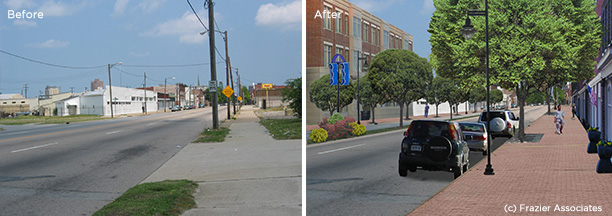Announcing the 2025 Science Discovery on Main Street Implementation Grantees
Meet the seven grantees of the 2025 Science Discovery on Main Street Implementation Grants!

Marion, Iowa © Tasha Sams
We work in collaboration with thousands of local partners and grassroots leaders across the nation who share our commitment to advancing shared prosperity, creating resilient economies, and improving quality of life.

Emporia, Kansas © Emporia Main Street
Made up of small towns, mid-sized communities, and urban commercial districts, the thousands of organizations, individuals, volunteers, and local leaders that make up Main Street America™ represent the broad diversity that makes this country so unique.

Chicago, Illinois © Main Street America
Looking for strategies and tools to support you in your work? Delve into the Main Street Resource Center and explore a wide range of resources including our extensive Knowledge Hub, professional development opportunities, field service offerings, advocacy support, and more!

Waterloo, Iowa © Main Street Waterloo
Your one-stop-shop for all the latest stories, news, events, and opportunities – including grants and funding programs – across Main Street.

Kendall Whittier — Tulsa, Oklahoma © Kendall Whittier Main Street
Join us in our work to advance shared prosperity, create strong economies, and improve quality of life in downtowns and neighborhood commercial districts.

In most communities, Main Street was the original corridor as well as the destination for visitors and residents. It usually grew around the early settlements such as a courthouse, mill, waterfront or railroad. As communities grew and roads expanded, other corridors served as entry points to and through the town. Today these corridors not only provide the first impression of our communities to visitors, they are used by residents daily, and their appearance may vary tremendously. Since most likely your downtown is accessed by one or more commercial corridors, their appearance is very important to the Main Street program. While the Main Street program may not take the lead in corridor enhancements, it can be a vital partner and advocate for improvements in overall community appearance.
To give you an example, we live in Staunton, Virginia, where downtown revitalization through the Main Street approach has been underway since the late 1970s. In its early beginnings, Staunton visitors reached town on the Valley Turnpike (now Route 11) and by the 1850s it was primarily accessed by train. Consequently, much of downtown grew in relation to the train station and even now it is best experienced from there. Today, however, most of our visitors arrive by the interstate highway and then drive along a two-mile commercial corridor to reach to our historic downtown. What, you might say, is the impact of such an arrival sequence?
Case in point, in the late 1990s a young couple from New Jersey was looking to buy a movie theater in a historic downtown. The husband took a train ride to Staunton to look at an available property. He stepped off the Amtrak train in downtown, walked up the street, and saw the theater. He was completely charmed by the historic downtown, and called his wife and told her he had found the perfect place. Their next visit was by car, when they drove along a two-mile commercial corridor, complete with chain stores and fast food restaurants, into town. He has since said that if he had arrived by car the first time he wasn't sure he would have reached downtown, much less have bought and renovated the theater!

Photo 1) Staunton from the train station. Photo 2) Staunton from the two-mile entry corridor.
So, not only are corridors an aesthetic concern, their appearance can have an impact on the revitalization of downtown. Downtown is the heart of the community and corridors are the arteries that can either keep it healthy or contribute to its problems. Think of them as the front door to our communities, where you want an attractive and welcoming entry for visitors and residents.
In the old days roads were designed to connect destinations. In many cases, Main Street, historically transitioned from the downtown commercial core, to residential neighborhoods, and then to the countryside and farmlands. As automobiles became more common, the historic corridor developed into a wider road, and businesses relocated along this route on the outskirts of town where there was more room for parking cars. The corridor eventually became congested and new roads were developed to bypass the congestion with the goal of keeping traffic moving. Consequently, many communities now have complicated road systems with bypasses to completely avoid downtown, and yet more bypasses to bypass the bypass that has become congested with businesses!
In order to retain a vibrant downtown, get people off the bypass and regain the welcoming “front door” by turning your attention to the primary corridors leading to downtown. Take a look at the situation with the perspective of your visitors to gain a better understanding of the opportunities and constraints of the corridor as it relates to downtown.
Begin by identifying the key routes into your downtown. As discussed earlier, these routes used to be the primary roads through the region and the heart of the community. Afterall, downtown, grew up on this road. Ask yourself these questions:
• Is there a well-defined gateway entrance into your community along key corridors?
• Are visitors told, either through streetscape design or wayfinding, how to find your downtown?

Look at the design characteristics of your corridors. Sometimes the scale of the corridor is a multi-laned highway with large auto-oriented developments including seas of parking lots. Moving closer to downtown, often the lots and buildings are smaller and closer together but the buildings remain auto-oriented such as grocery stores, gas stations, tire dealerships and so on. The appearance is often very utilitarian, signs are pole mounted, parking lots are open and unlandscaped. Utilities are often above ground and lighting is very basic. The corridor may transition to residential scaled buildings, or the corridor to downtown may be blighted with underutilized commercial buildings. Assess the pros and cons, keeping in mind the perspective of a visitor.
After looking at the character of your corridors, understand the underlying zoning for the corridors and any design guidelines that may be in place for proposed redevelopment on the corridors. Examine how these regulations will impact improvements on the corridor, creating a positive experience for visitors.
Consider rating your community’s corridors into categories of:
• which ones need the most attention,
• which ones realistically may be enhanced, and
• what level of effort is being expended on them now in terms of local programs and capital improvement budgets.
The big question might be: “Is corridor design and appearance even recognized as an issue in your local government’s priorities?”
This article is only an introduction to corridors leading to your downtown. Future installments will examine:
Corridor Design: Connections to Main Street
A. Design Principles of Attractive and Functional Corridors
B. Corridor Enhancement Conceptual Design Approaches
C. Taking Action: Creating a Plan and Making Improvements
D. Strategic Corridor Alliances for Main Street Organizations
Strategies and Tools to Improve Corridors
A. Regulatory
1. Zoning Regulations
2. Form Based Codes
3. Corridor Overlay Districts
B. Incentives
1. Site/Building Improvement Programs
2. Other Financial Incentives
C. Design Guidance
1. Corridor Manuals
2. Design Guidelines
D. Other Innovative Approaches
William T. Frazier, AICP and Kathleen O. Frazier, AIA, are principals with Frazier Associates, a Virginia-based architecture, planning, and graphic design firm whose mission is to help preserve, revitalize and sustain communities large and small. The firm has provided design assistance to Main Street communities for over 28 years and has completed more than forty sets of design guidelines throughout the southeast United States. Learn more at www.frazierassociates.com.